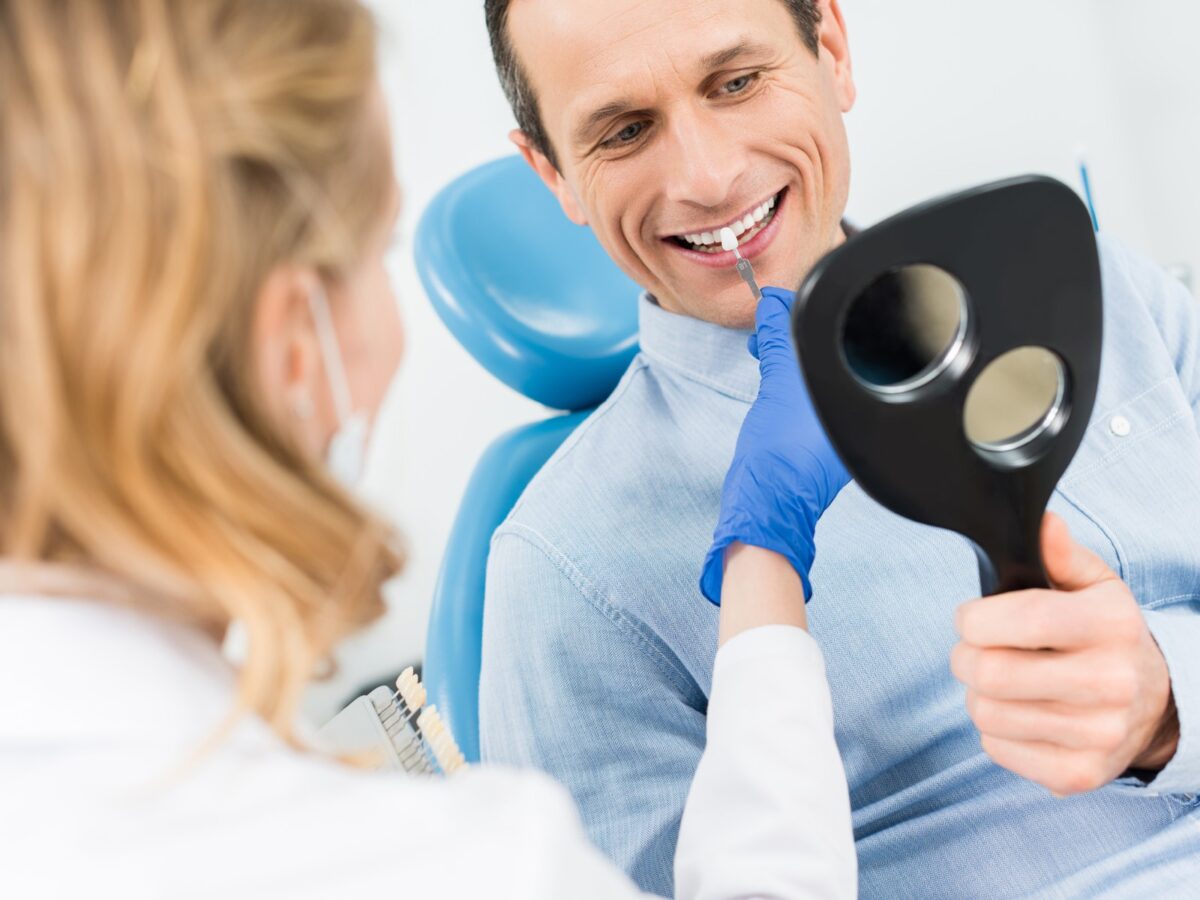Blog
Dental hygiene tips for healthy teeth & gums

Do You Have Brown Spots On Your Teeth?
Oral health is very important, but there are so many factors that can have irregular effects on oral health, giving rise to common issues like brown discoloration on teeth. These stains may range in color from light yellow-brown to dark black-brown, and their appearance may be in the form of an irregular blotchy patch or distinct lines. It is significant to know that you should be well aware of the factors causing the discoloration and what treatments are possible to give you a bright, healthy smile.
Causes of Brown Teeth Stains
Smoking
Smoking is one of the most substantial contributors that can leave your teeth stained. The nicotine and tar in cigarettes bind themselves to your tooth’s enamel, hence the cause of the stubborn brown stains. As time goes by, these substances will sink deeper into the enamel, making it difficult to remove those stains.
Medication
Some medications can also cause tooth discoloration. Certain antibiotics, such as tetracycline, are responsible for intrinsic discolorations—that is, discolorations that form on the inside of the tooth. These are usually more difficult to treat because the stain is embedded within the tooth structure.
Food and Drink
Diet has a strong influence on tooth color. Foods and beverages that are highly concentrated in tannins and chromogens—such as coffee, tea, red wine, and berries—are known to cause extrinsic staining of the teeth. The nature of the staining is usually superficial and can be exaggerated with higher frequency.
Poor Oral Hygiene
Neglecting proper oral hygiene practices can lead to the accumulation of plaque and tartar, which can result in brown spots. Plaque is a sticky film of bacteria that forms on teeth and can harden into tartar if not removed regularly through brushing and flossing.
Trauma and Illness
Such trauma to the teeth due to falls or injury easily causes grey or brown discoloration. Also, there are certain diseases and their treatment courses, including radiation and chemotherapy, that alter tooth color.
How to Get Rid of Brown Stains
There are numerous methods to remove or reduce brown stains on teeth, ranging from at-home treatments to professional dental procedures.
At-Home Treatments
Baking Soda
Brushing with baking soda is a common at-home method for teeth whitening. Baking soda is a mild abrasive that helps to scrub away surface stains. When combined with hydrogen peroxide, it forms a paste that can oxidize and lift stains.
Over-the-counter (OTC) Teeth Whitening Products
OTC whitening products, such as toothpaste and strips, often contain mild abrasives and peroxide to help remove surface stains. However, these should be used sparingly to avoid excessive enamel wear, which can make teeth appear more yellow by exposing the dentin layer underneath.
Professional Dental Treatments
Dental Cleaning
Professional dental cleaning is one of the most effective ways to remove surface stains and tartar buildup. During a cleaning session, a dentist or dental hygienist will use specialized tools to clean your teeth thoroughly, removing plaque and tartar that brushing and flossing alone cannot eliminate. This process not only brightens your teeth but also enhances overall oral health by preventing gum disease.
Bleaching
Dental bleaching involves the use of stronger whitening agents than those available in OTC products. Dentists can provide custom-fitted trays and professional-grade bleaching gels to ensure even and effective whitening. This method can significantly lighten teeth and remove deeper stains that at-home treatments cannot address.
Veneers
For severe or stubborn stains that do not respond to other treatments, dental veneers are an excellent option. Veneers are thin, custom-made shells of porcelain or composite resin that cover the front surface of the teeth. They can dramatically improve the appearance of your smile by altering the color, shape, and size of the teeth. Veneers are particularly useful for intrinsic stains that cannot be removed through bleaching.
Importance of Oral Hygiene and Lifestyle Changes
Proper oral hygiene is essential in avoiding brown spots and other related complications
Frequent Brushing and Flossing
Brush your teeth at least twice with fluoride-containing toothpaste and then floss once to remove the plaque and food debris. Brushing and flossing methods of teeth would help avoid plaques and tartar accumulation which leads to staining.
Dental Checkups
Regular dental check-ups and cleanings are necessary to maintain oral health. Dentists can find possible problems at an initial stage and offer professional cleaning to start removing tartar and surface staining.
Diet and Lifestyle Changes
Control food and beverages that have a higher ratio of tooth-staining tendencies—for example, coffee, tea, red wine, and soda. Still, if you tend to drink, then you can try rinsing your mouth with water to reduce the capacity to stain, though on a lower side. Smoking and alcohol consumption keep darkening teeth; therefore, they should be reduced or stopped for all the right reasons to prevent the stains related to smoking.
Consulting a Dentist
If you’re experiencing brown spots on your teeth, it’s essential to consult with a dentist to determine the underlying cause and appropriate treatment. During a dental consultation, the dentist will conduct a thorough examination of your teeth and gums, possibly using X-rays to assess the extent of staining and any other dental issues.
Conclusion
Brown spots on the teeth are quite a common problem caused by smoking, some foods and beverages, medications, poor oral hygiene, and traumatic injuries. While some home-based remedies, like baking soda and over-the-counter whitening products, can create the illusion of improvement when superficial discoloration is removed, professional treatments for cleanings, bleaching, and veneers have much more to offer in the hands of experienced dentists.
The prevention and treatment of brown tooth spots involve the maintenance of proper oral hygiene, dietary changes, and lifestyle modification, with regular visits to the dentist. If you think you have brown spots or are just concerned about your oral health, look for a dentist consultation to discuss the best options for treatments to get a brighter and healthier smile.
Contact our dentists today to learn more about how our services can help you achieve a whiter smile today. Book an appointment to find out which treatment might be best for you. Getting started on the path to a beautiful smile needs professional care and guidance.


